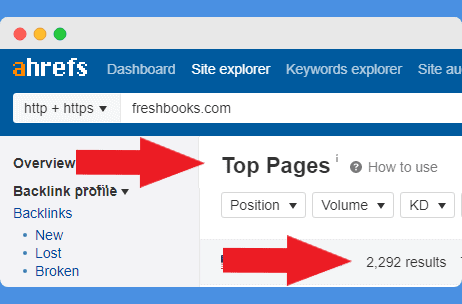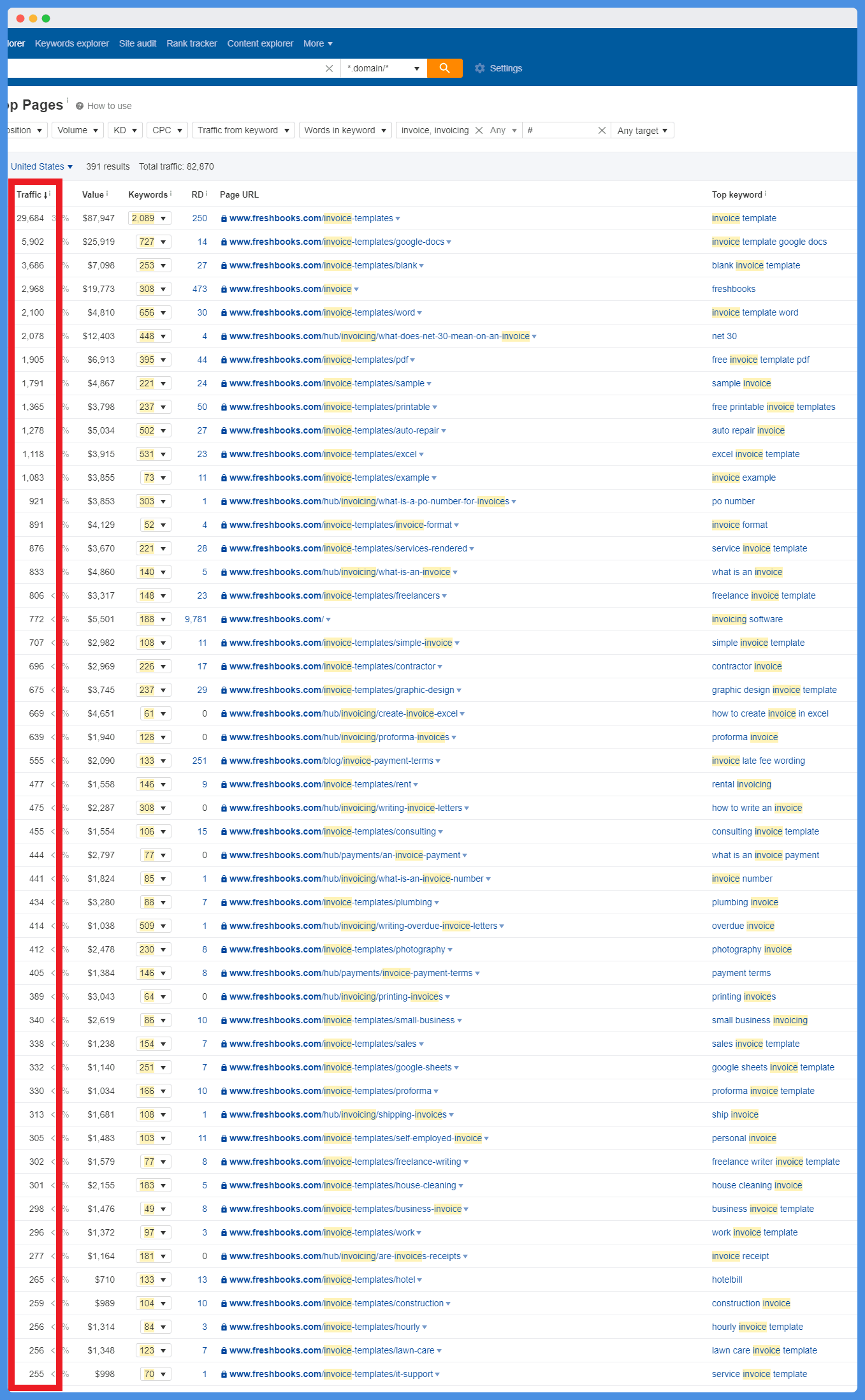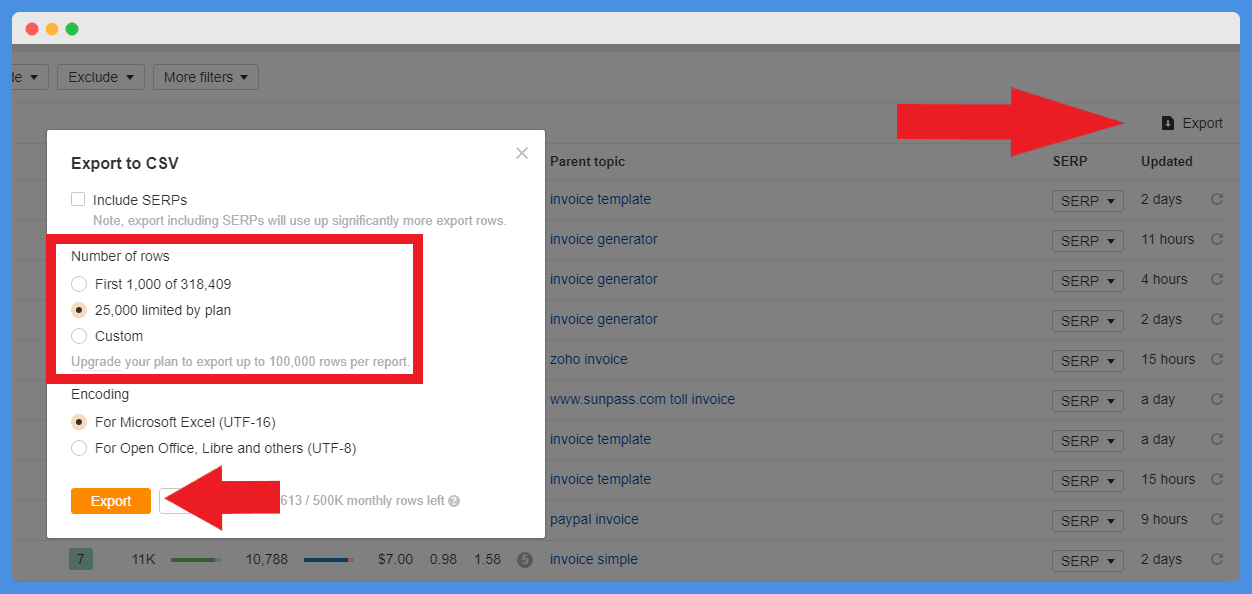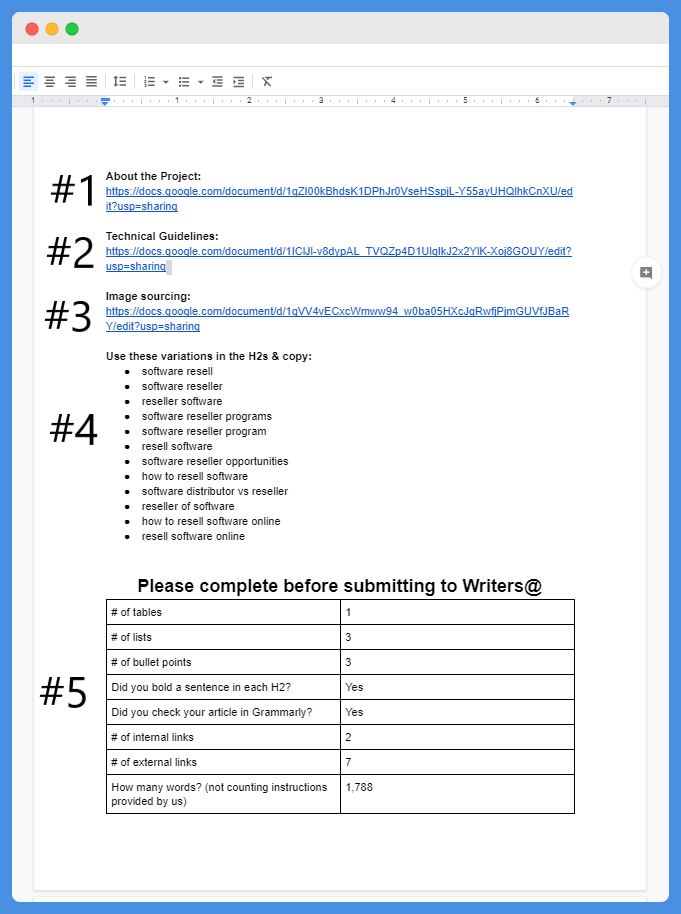B2B SaaS Keyword Research is Broken & How to Fix it
Keyword research for B2B SaaS companies is broken.
contentdistribution.com has taken three projects from 0 visitors/month to 100,000+ organic search visitors per month.
In the last year.
Our greatest project hit 479,000 organic search visitors/month in 16 months.

Here is another

And another

And keyword research sucks.
- It requires a high level of skill to do correctly
- Decisions are made from the gut and the process is prone to human error
- It’s a manual, tedious process to cluster keywords into unique pages
- Deliverables are inconsistent from person to person
Keyword research for B2B SaaS companies requires high levels of skill
High quality keyword research, like most things, requires repetition to become proficient.
If you don’t have these reps in, you’ll have to be OK doing subpar keyword research.
Subpar keyword research limits the impact of your SEO investment, because poorly optimized pages don’t rank well.
And it’s really easy to make mistakes.
And making a mistake on the foundation can impact the ROI on your entire SEO investment.
Check out the next section to learn why it’s so easy to make mistakes.
Keyword research for B2B SaaS is an art, not a science
One of the primary goals of keyword research is to identify:
- Main keywords to create content around
- Variations of the main keyword to use in the content
In order to rank well, you need to optimize your content for your main keyword, and all of the variations of that main keyword people use in their searches.
If you choose the wrong keyword variations the impact of your SEO investment will be minimal.
Here is an example.
You have 2 keywords:
- LinkedIn profile
- LinkedIn headline
This might seem like two ideas in one article.
But in order to rank for both keywords you need to publish two pages.
Not one.
Why?
Because there aren’t any pages ranking for both keywords.
Check out the search results.
Best Linkedin Profile

Best LinkedIn headline

There isn’t a single page ranking for both keywords.
Look at the URL, meta title, and meta description.
The search results for each keyword is optimized for one keyword or the other, not both.
And if you optimized one page for both keywords you wouldn’t rank for either.
Because the space to drive relevance to the keywords you want to rank for is limited to:
- URL
- Meta title
- Meta description
- H1
- H2s and other headings
- Internal links
- External links
And if you waste your limited real estate to drive relevance by optimizing for the wrong keywords you’ll be outranked by pages that used their limited space to optimize more effectively.
In fact, being more relevant is one of our top strategies for outranking stronger, more powerful domains.
Learn more about the importance of relevance and check out how how Google really works.
Check out this example of a piece of content we published for AnyLeads, which is currently outranking Hubspot for the keyword ‘Linkedin inmail templates‘.

We don’t have:
- Higher domain authority
- More backlinks
- A bigger budget
- A bigger team
- Better writers
But we’re more relevant to the query than HubSpot’s page.
Learn how we rank above competitors with bigger brands and more backlinks.
[optin-monster slug=”ewkbrxc1xmprofomyqkf-2″]
Using ClusterAi To Perform Expert Level Keyword Research For Your B2B SaaS
ClusterAi is keyword grouping tool that helps B2B SaaS companies map out every opportunity they have to drive qualified traffic, and more.
- ClusterAi makes expert level keyword research accessible to anyone, regardless of SEO experience
- Keyword decisions are made based on data from Google, so your keyword research is perfect each time.
- ClusterAi enables you to map a 24 month content calendar, down to the exact keyword variations you’ll use on each page, in hours, not weeks
Here is how ClusterAi works:
- Perform keyword research using your favorite SEO tool – Ahrefs, SEMRush, or Google Search Console
- Import the list(s) of thousands of keywords you found that can drive qualified traffic to your website
- ClusterAi scrapes Google for each keyword and retrieves all of the websites ranking on the first page
- ClusterAi analyzes and compares websites that rank for multiple keywords
- And when a pair of keywords has 3 or more websites ranking for both keywords it groups those keywords together into a unique content topic.
If 3 or more websites rank for a pair of keywords with one page, you probably can too.
But if there are 2 or fewer websites ranking for a set of keywords with one page, you probably won’t be able to rank for both keywords with one page either.
Example Keyword Research for FreshBooks (B2B Invoicing Software)
FreshBooks helps hundreds of thousands of small businesses send invoices more easily.
And they are crushing organic search with 500k+ organic search visitors every month.

Their secret to success?
Publishing velocity, publishing velocity, publishing velocity.
FreshBooks has published more than 2,200 pages of content.

Of these 2,200 pages, 390 pages, or about 15% are focused on invoices and invoicing.

Why did FreshBooks publish 390 pages about invoicing?
Because nobody, including Freshbooks, can rank for every way people are searching for invoice and invoicing with one page.
Not even one hundred pages.
FreshBook’s SEO is being led by the very awesome Steve Toth @ theSEONotebook.com. Neither Steve or FreshBooks is a Content Distribution customer, nor did they contribute or participate in this blog post in anyway, we’re just Steve Toth’s #1 fans. 🙂
(And think he would have saved a ton of time with ClusterAi).
Look how easy this is.
Search Ahrefs for invoice, invoices and invoicing.
Ahrefs not the best SERP tracking tool for you? We’ve tested +35 alternatives for you.
Click ‘having same search term’.
This shows you every single way people search using those keywords.
And there are nearly 400,000 variations in the way people are searching Google using these words.

If we asked you to
- Identify 390 unique opportunities from a list of nearly 400,000 keywords
- Keyword research for each of those 390 pages
- Record the keyword research in your project management stack
How long would it take?
SEOs can spend weeks mapping out the content funnel for their site.
With ClusterAi this takes minutes.
After you’ve built your keyword list, export your keywords from Ahrefs.

Import your keywords into ClusterAi
After a few hours of processing (it takes several hours to scrape and group your keywords) you’ll receive an email to download a CSV with your ClusterAi keyword groupings.
ClusterAi provides:
- The main keyword
- The total monthly search volume for the group
- The variations of the main keyword
Knowing the total monthly search volume across all of the keywords in a group allows you to better prioritize your content calendar.
Plan your content calendar
There is probably going to be some irrelevant groups in your groupings.
That’s OK. Just skip them.
Next, count the number of opportunities you’ve identified.
It’s likely in the hundreds.
Now multiply that number by your cost to produce content.
This is your total content cost.
Forecast your SEO outcomes with our SEO ROI Calculator
Now you can decide how fast you want to publish.
Do you want to publish all of the pages needed in 6 months? 12 months? 18 months?
Divide the total number of pages by your desired publishing timeline.
Learn why the #1 lever you can pull to achieve the fastest SEO results is rate of publishing
Here is an example of what this could look like.
Let’s say we identify 200 opportunities to get in front of our target audience across the funnel.
200 opportunities to drive qualified traffic * $150/page content cost = $30,000 content cost.
If we want to tackle these opportunities in 6 months, we need to budget (200 / 6 = 33 * $150) $5,000/month.
And to write 33 pieces of content per month, we need approximately 8 writers.
Now you know:
- Your total content cost
- Your monthly budget
- The number of pages of content you need to publish each month
- How many writers you need to recruit
Knowing the total content cost gives you a lot of insight into the total cost of your campaign and allows you to forecast a variety of outcomes using contentdistribution.com’s SEO ROI calculator.
Get the keywords to your writers
Now that you’ve developed your targets and priorities, you need to communicate this information to your writers.
At contentdistribution.com we’ve automated the steps below.
Our focus on automation and streamlining processes has allowed a core team of 3 to scale to 100 pages+ of high quality, high impact content per month.
First, we import the excel sheet linked in the email into Airtable.
Then our automation creates a Google doc and adds to the link to the record in Airtable.

This Google Doc contains everything the writer needs to get started.

- A link to another Google Doc with everything the writer needs to know about the project
- A link to our standard writing guidelines for any content written for contentdistribution.com
- A guide on sourcing and image attribution
- The keyword variations for the article
- A checklist the writer must be complete before submitting the work that allows them to self certify that they’ve followed our writing guidelines to the T.
And you know what?
This enables us to turn any writer into an SEO content writer, producing naturally ranking content.
Remember the screenshot above of AnyLeads outranking Hubspot?

That article was written by a writer with no SEO experience, and edited and optimized by an editor with no prior SEO experience.
By, you guessed it, using a process doc.
Learn how to turn any writer into an SEO content writer
Our best content
Want to learn how we’ve grown 4 websites from approximately zero to 100,000 visitors per month, with the biggest one doing 500,000 in just 17 months?

We share it all.
- SEO ROI Calculator
- How we crush B2B SaaS SEO
- How to find and hire the highest quality, most affordable writers on the internet
- The #1 lever to get the fastest SEO results
- How Google actually works (based on 65,000 page 1 keywords)
- How to turn any writer into an SEO content writer
- Brand Jacking (ranking for your competitor’s brands)
- How we crush B2C SaaS SEO
- How to rank without backlinks
- The greatest SEO case study of 2020: 0 to 479,000 monthly organic in 16 months



